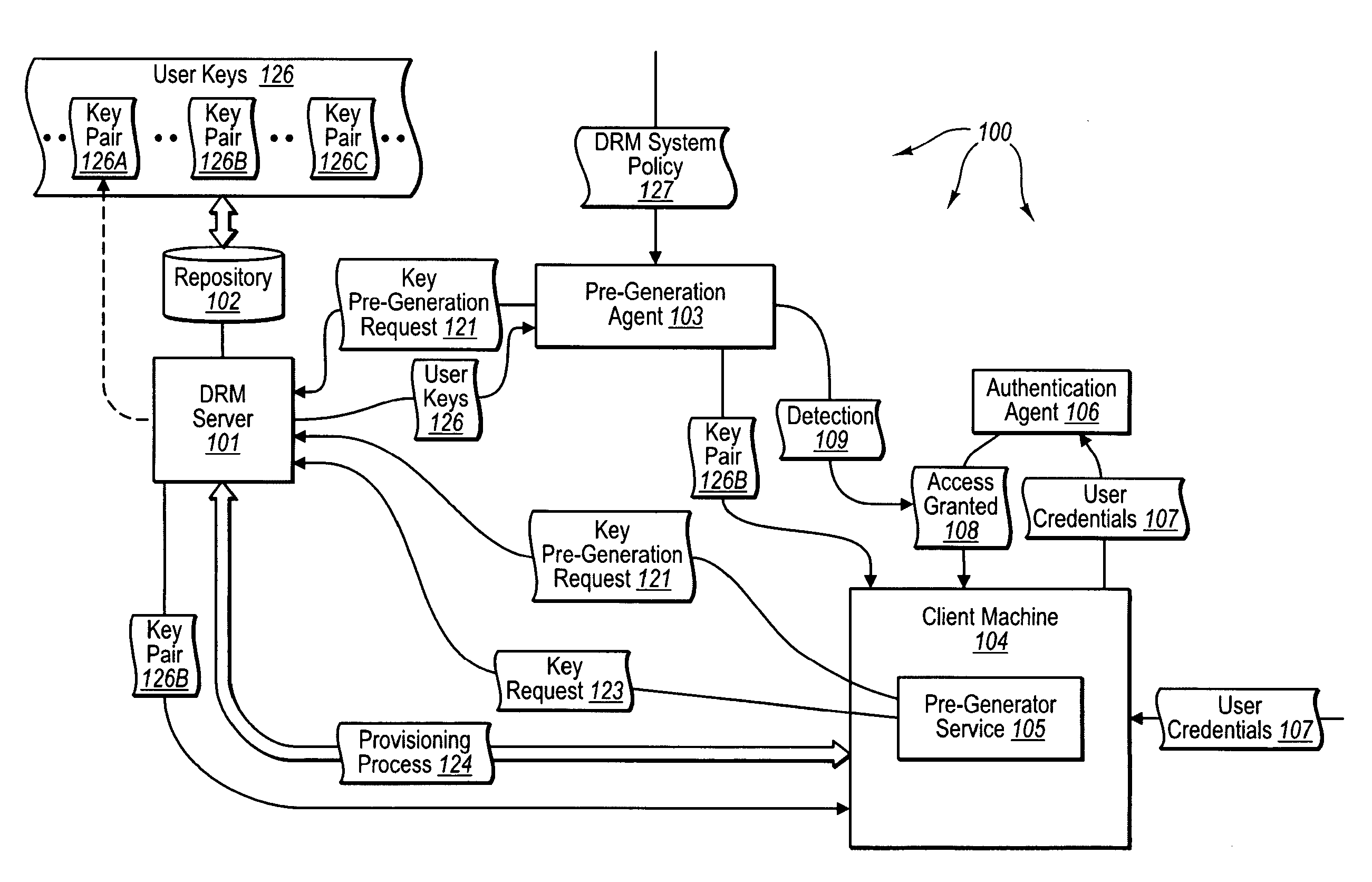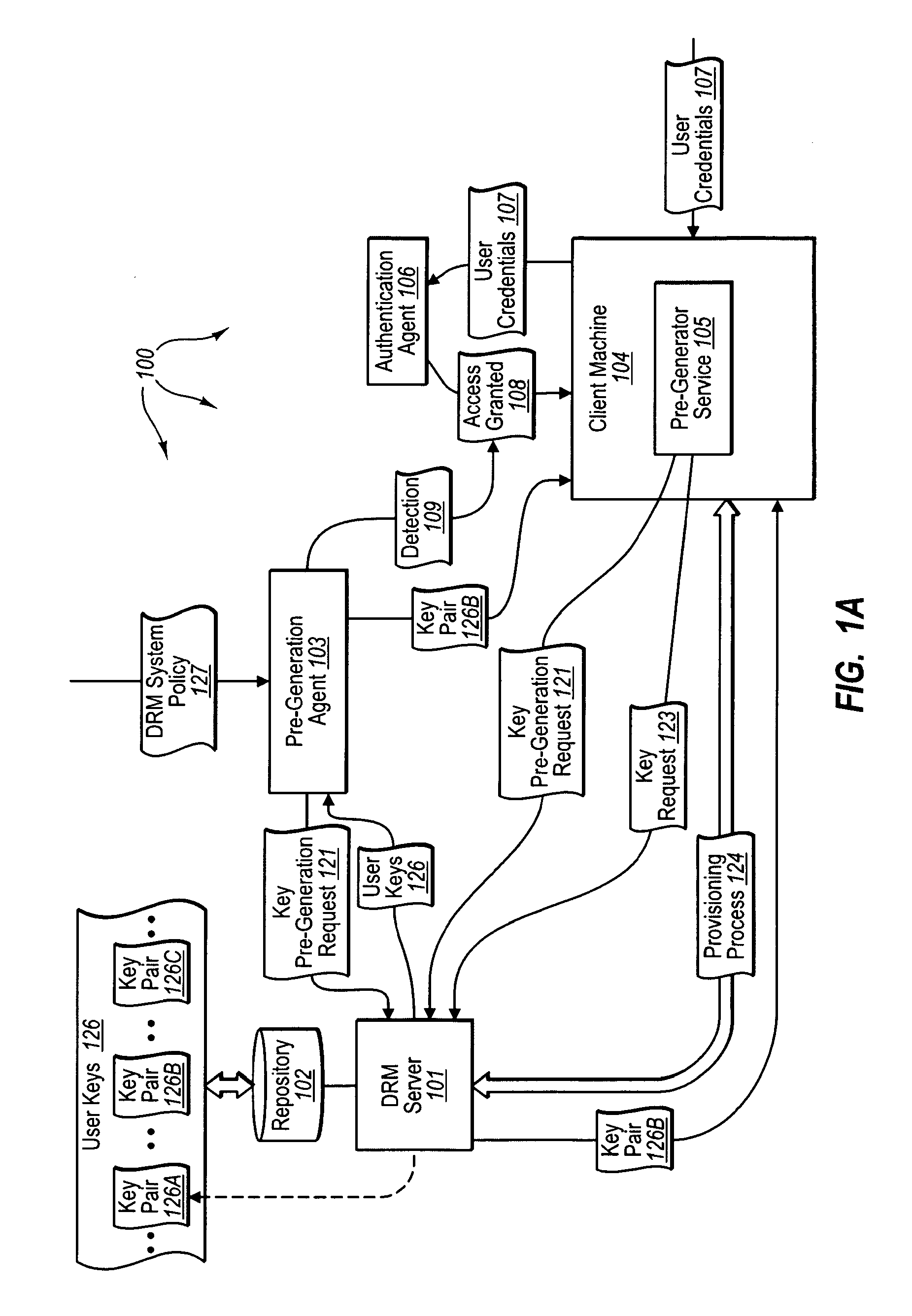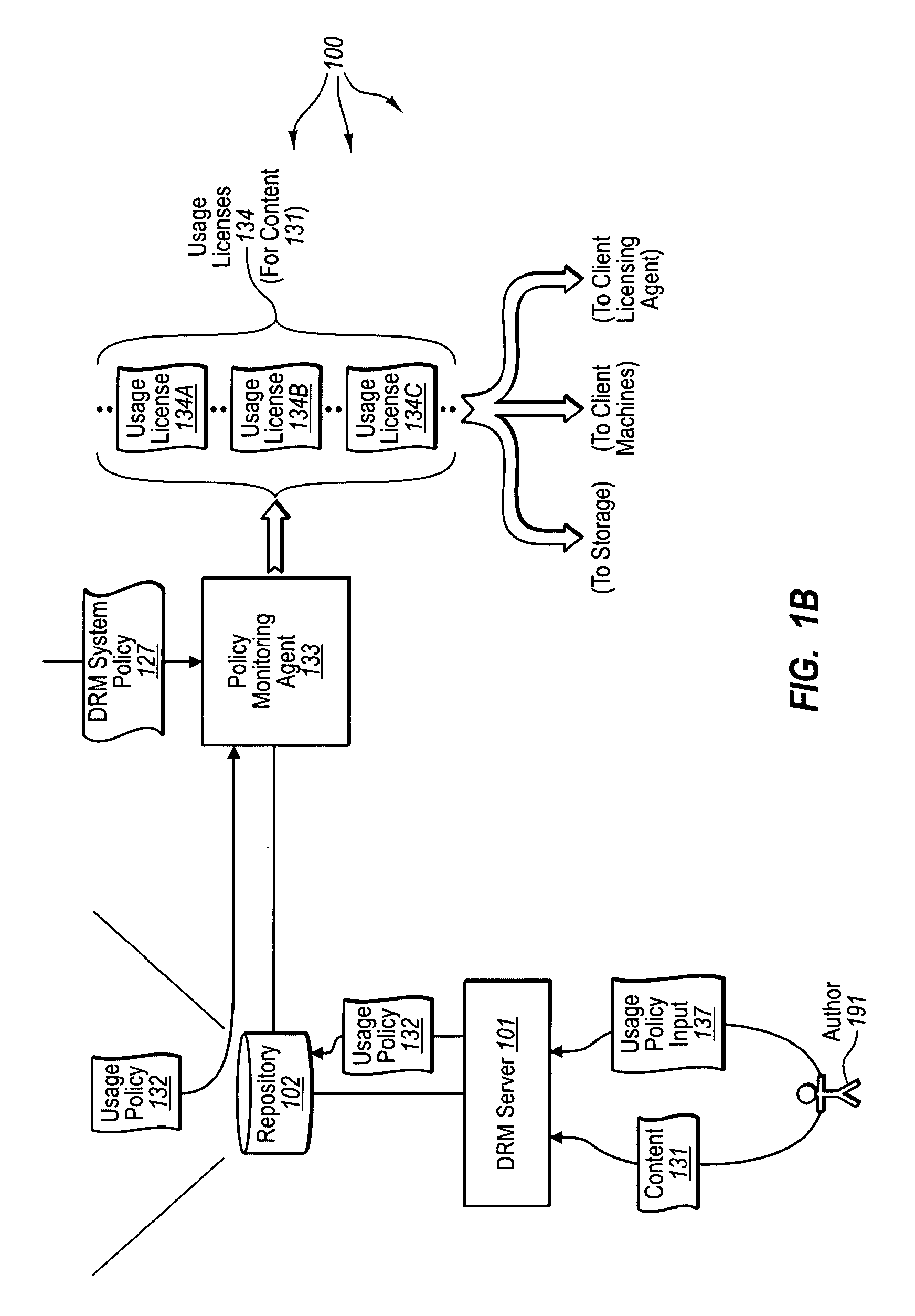Pre-performing operations for accessing protected content
a technology performing operations, applied in the field of pre-performing operations for accessing protected content, can solve the problems of consuming considerable system resources, limiting the access to electronic data, and restricting the actions that recipients may take, so as to reduce the consumption of resources for delivering the usage license to a client machin
- Summary
- Abstract
- Description
- Claims
- Application Information
AI Technical Summary
Benefits of technology
Problems solved by technology
Method used
Image
Examples
Embodiment Construction
[0032]The present invention extends to methods, systems, and computer program products for pre-performing operations for accessing protected content. In some embodiments, principal cryptographic key pairs for use in Digital Rights Management (DRM) operations are pre-generated prior to receiving a key request for a principal cryptographic key pair. An authorization server receives a key pre-generation request from a pre-generation module in a DRM system. The key pre-generation request is sent from the pre-generation module in response to the occurrence of a key pre-generation event within the DRM system.
[0033]The authorization server performs cryptographic operations to pre-generate one or more principal cryptographic key pairs of a compatible format for use with the DRM system in response to the key pre-generation request. The one or more principal cryptographic key pairs are pre-generated for subsequent distribution to requesting client machines in response to corresponding subsequ...
PUM
 Login to View More
Login to View More Abstract
Description
Claims
Application Information
 Login to View More
Login to View More - R&D
- Intellectual Property
- Life Sciences
- Materials
- Tech Scout
- Unparalleled Data Quality
- Higher Quality Content
- 60% Fewer Hallucinations
Browse by: Latest US Patents, China's latest patents, Technical Efficacy Thesaurus, Application Domain, Technology Topic, Popular Technical Reports.
© 2025 PatSnap. All rights reserved.Legal|Privacy policy|Modern Slavery Act Transparency Statement|Sitemap|About US| Contact US: help@patsnap.com



